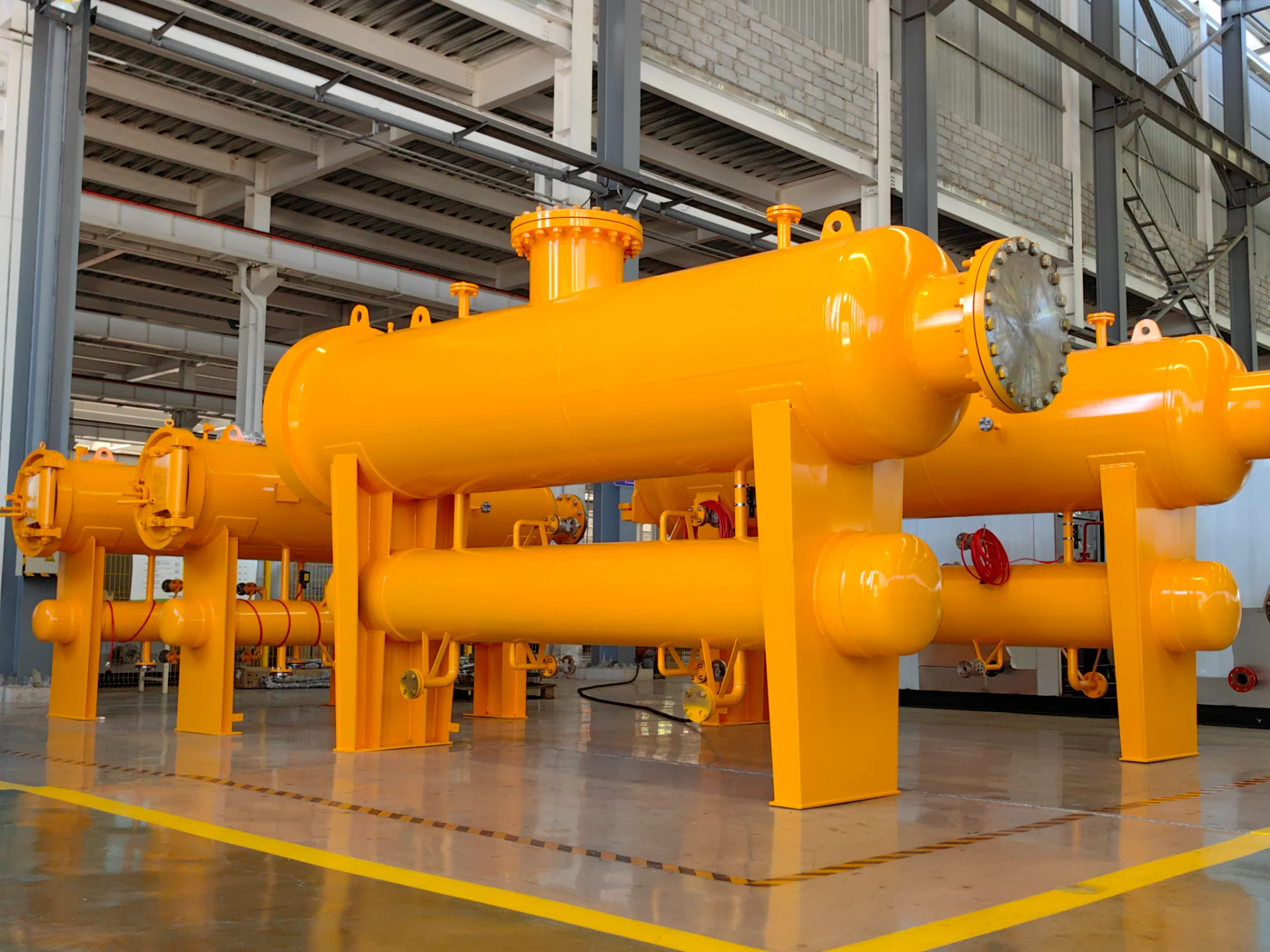
Dec . 20, 2024 10:39
Back to list
مبادل حراري للغاز
Understanding Heat Exchangers for Gases
Heat exchangers are essential devices in many industrial processes, enabling efficient thermal energy transfer between two or more fluids, which can be liquids, gases, or a combination of both. When focusing on gas heat exchangers, one must appreciate the intricacies of gas behavior and the importance of heat transfer in various applications—from HVAC systems to power generation and chemical processing.
The Principle of Heat Exchange
At the core of a heat exchanger's operation is the principle of conduction, convection, and sometimes radiation. Heat exchangers facilitate the transfer of heat from a hotter gas to a cooler one, ensuring that energy is utilized effectively. The fundamental driving force for this process is the temperature difference between the two fluids. The greater the difference, the more efficient the heat transfer will be.
Types of Heat Exchangers
Heat exchangers for gases can be classified into several types based on their construction and operational mechanisms. Some common varieties include
1. Shell and Tube Heat Exchanger This type comprises a series of tubes, one set carrying the hot gas and the other the cooler gas. The design allows for large surface areas to enhance heat transfer efficiency while minimizing space.
2. Plate Heat Exchanger Instead of tubes, this exchanger uses thin plates to separate the gases. The design allows for a compact configuration and efficient heat transfer, making it ideal for small-scale applications.
3. Air-to-Air Heat Exchanger Often used in ventilation systems, this design transfers heat between two airstreams without mixing them. It is commonly employed in energy recovery systems to improve indoor air quality.
4. Fin-Tube Heat Exchangers These enhance heat transfer by incorporating fins on the tubes, thereby increasing surface area and enhancing thermal efficiency. They are particularly effective in applications where gases need rapid cooling or heating.
.
Heat exchangers for gas applications are ubiquitous across various industries. Some notable areas include
مبادل حراري للغاز

- Power Generation In power plants, gas heat exchangers play a crucial role in recovering waste heat from exhaust gases and repurposing it for other processes, such as pre-heating feedwater, thereby improving overall efficiency.
- Chemical Processing Many chemical reactions are exothermic or endothermic and require precise temperature controls. Gas heat exchangers help manage these temperatures, ensuring optimal reaction conditions while recovering heat for other use.
- HVAC Systems In residential and commercial buildings, heat exchangers are vital for maintaining comfortable indoor temperatures and achieving energy efficiency. They help transfer heat between incoming and outgoing air, ensuring that fresh air is properly conditioned.
- Automotive Applications In vehicles, heat exchangers are used to manage temperatures in engines, transmission systems, and even passenger compartments to enhance comfort and efficiency.
Efficiency Considerations
The effectiveness of a gas heat exchanger is determined by several factors, including its design, the flow arrangement (counterflow, parallel flow, and crossflow), and the properties of the gases involved. It is crucial to optimize these parameters to ensure maximum heat recovery and minimum energy loss.
Efficiency metrics, such as the NTU (Number of Transfer Units) method, are often employed to analyze and improve the performance of heat exchangers. The selection of materials, surface treatments, and the configuration of the heat exchanger can significantly impact performance and longevity.
Challenges and Innovations
While heat exchangers are vital, they also face challenges, including fouling and corrosion, which can hinder performance over time. Innovations in material technology and designs, such as enhanced surface structures or coatings, are underway to overcome these challenges. Additionally, the rise of smart technologies facilitates the monitoring and optimization of heat exchanger performance in real time.
Conclusion
In summary, gas heat exchangers are critical components in many industrial and domestic applications. They not only enhance energy efficiency but also contribute to significant cost savings and environmental benefits by reducing energy consumption. As technology continues to advance, we can expect even greater innovations in the design and efficiency of heat exchangers, paving the way for more sustainable industrial practices. Understanding their function and applications is essential for engineers and industries looking to optimize their thermal management systems.
Latest news
-
Safety Valve Spring-Loaded Design Overpressure ProtectionNewsJul.25,2025
-
Precision Voltage Regulator AC5 Accuracy Grade PerformanceNewsJul.25,2025
-
Natural Gas Pressure Regulating Skid Industrial Pipeline ApplicationsNewsJul.25,2025
-
Natural Gas Filter Stainless Steel Mesh Element DesignNewsJul.25,2025
-
Gas Pressure Regulator Valve Direct-Acting Spring-Loaded DesignNewsJul.25,2025
-
Decompression Equipment Multi-Stage Heat Exchange System DesignNewsJul.25,2025

